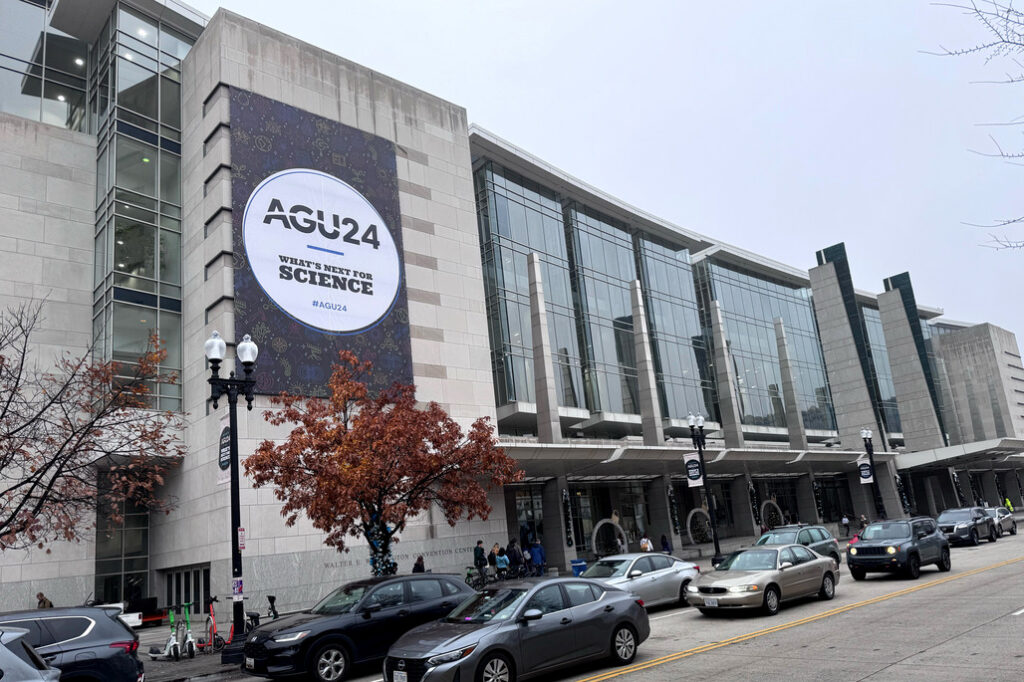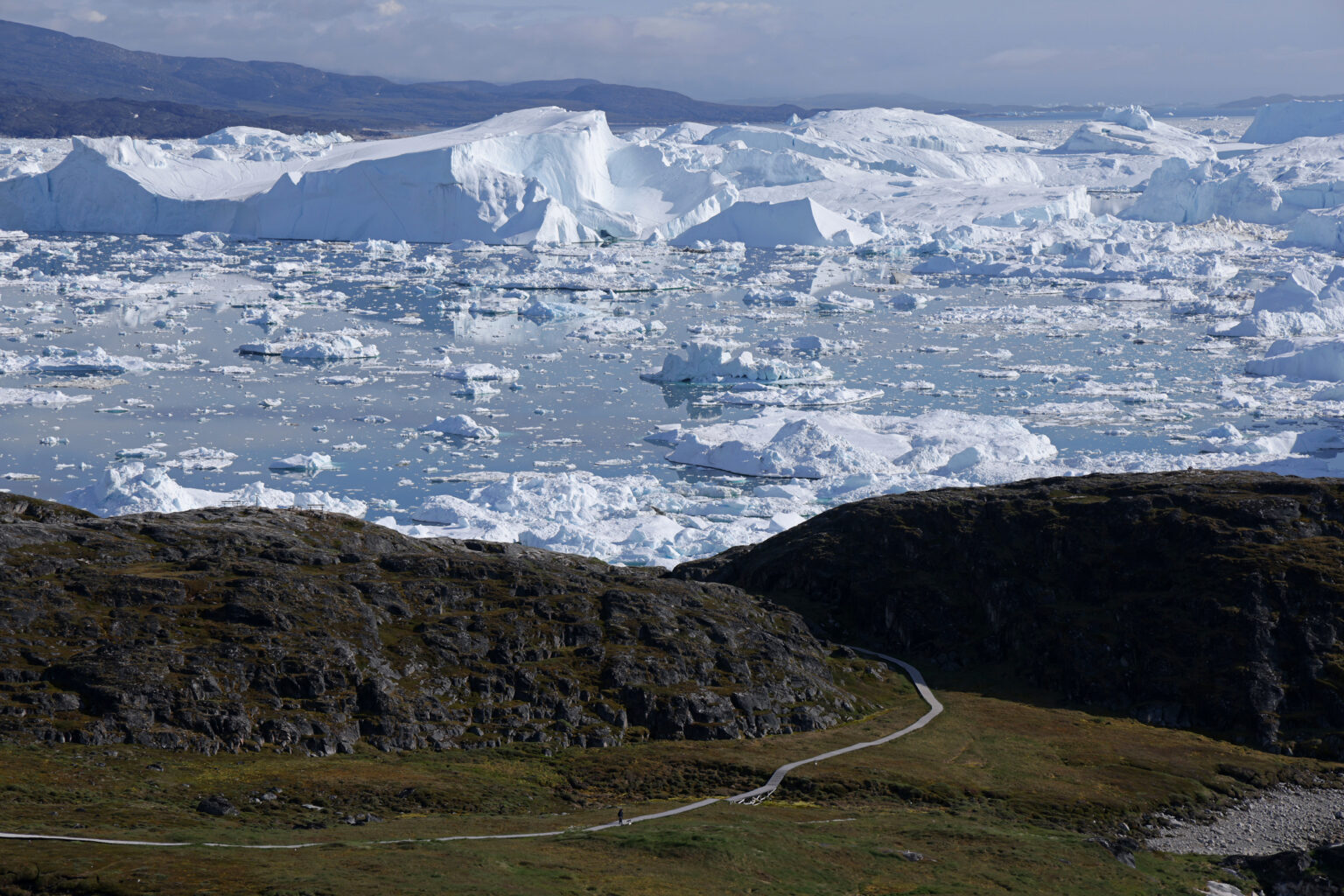Permafrost begins to melt; carbon sink now a carbon source?
from Inside Climate News, published as Arctic Tundra Shifts to Source of Climate Pollution, According to New Report Card.
NOAA scientists and affiliated researchers have documented profound change in the frozen north as U.S. government science itself faces an uncertain future.
WASHINGTON—The icy region at the top of the globe, lashed by wildfire and pelted with increasingly heavy precipitation, has tipped into “uncharted territory,” scientists reported Tuesday.
The Arctic tundra has shifted from storing carbon in the soil to becoming a carbon dioxide source, the National Oceanic and Atmospheric Administration (NOAA) and its partner researchers concluded in their 19th annual Arctic Report Card.
As a result, the Arctic’s ability to help regulate Earth’s temperature is significantly compromised. Emissions from warming permafrost regions must be thought of as an increasing risk to a planet already being transformed by the overburden of fossil fuel pollution.
“This year’s report paints a clear and urgent picture of the Arctic’s evolving conditions,” said NOAA Administrator Richard Spinrad. “We are seeing impacts of warming in real time in the Arctic, and it’s a call to action.”
The final Arctic Report Card of President Joe Biden’s term injects uncertainty into the climate picture at the same time that NOAA and other U.S. science agencies head into an unknown future. President-elect Donald Trump, who does not view climate change as a serious threat, has pledged to slash the size of the federal government. His choice for budget director helped craft a roadmap, known as Project 2025, that describes NOAA as “one of the main drivers of the climate change alarm industry” and calls for the agency to be broken up, with most of its climate research ended.
Congress will have the final say on whether that vision is realized. So it was especially striking that NOAA delivered its big Arctic report at the 24th annual meeting of the American Geophysical Union (AGU), held this year in the nation’s capital. The largest yearly gathering of Earth and space scientists, with more than 25,000 attendees from 100 countries, took place at the Walter E. Washington Convention Center. Banners around the building heralded AGU24’s meeting theme and announced the question looming over the conference: What’s Next for Science.

A “New Normal” That Won’t Last
The Arctic Report Card contained a litany of records and near-records, as has become routine for the report. Surface air temperatures: second-warmest since 1900. Summer 2024: wettest ever in the Arctic. Sea ice extent: sixth-lowest on record. Tundra greenness: second-highest in the 25-year record of satellite observations. Shortest snow season on record.
But more important than any single record, the scientists wrote, was a shift into a phase that would be described as a new normal—although they do not expect it to last.
“The Arctic today looks really different than the Arctic of a couple of decades ago,” said Twila Moon, deputy lead scientist at the National Snow and Ice Data Center in Boulder, Colorado, who served as the report card’s lead editor. “But because we understand climate change, and we know that we’re continuing to put heat-trapping gases into the atmosphere, we haven’t gotten to something that is a ‘new normal.’ We’re not going to stabilize at what we’ve termed here as a kind of a ‘new regime’ for the Arctic. It’s going to continue to see rapid change and really new conditions into the future.”
One of the most dramatic changes documented in this year’s report was the shift of the tundra from carbon sink to carbon source. For millennia, the tundra has stored more carbon than it has released. And because warming stimulates plant productivity and growth, the uptake of carbon in the region has increased. But that uptake has been overwhelmed by the release of carbon, especially from wildfires.
Circumpolar wildfire emissions have averaged 207 million tons of carbon per year since 2003, the report said. That’s equivalent to the emissions of 200 coal power plants. So even when balanced against the impact of the increased greening of the tundra, the net effect is that the treeless region has been a sustained carbon source on average over the past 20 years.
This story is funded by readers like you.
Our nonprofit newsroom provides award-winning climate coverage free of charge and advertising. We rely on donations from readers like you to keep going. Please donate now to support our work.
Although the net release over that time has been relatively small, the report’s authors said, they view it as an ominous sign. The soil beneath the permafrost of the Arctic holds about twice as much carbon as is now in the atmosphere, and about three times as much carbon as is in all of the above-ground biomass in the world’s forests. In 2024, temperatures at nine of the 20 long-term permafrost monitoring stations across the Arctic were the highest on record.
“We’re not expecting that all to be released from climate change,” said Brendan Rogers, associate scientist at the Woodwell Climate Research Center in Falmouth, Massachusetts, co-author of the report’s carbon cycle chapter. “But even if a small fraction of that is released, it could be a big deal. The permafrost carbon feedback, we call it, could be on par with a major global economy. The problem is, unlike a major global economy, we can’t switch it off with policy decisions.”
Moon said the tundra finding lends increased urgency to those policy decisions. “It means we have to think differently about how much human release of heat-trapping gases we can have and still meet goals in regard to limiting our warming,” she said.
NOAA’s Future in the Balance
The United States, the largest historic contributor of greenhouse gas to the atmosphere, is poised to abandon the goal that the Biden administration set to cut its climate pollution in half from 2005 levels by 2030. Trump has pledged to again exit the Paris Agreement and increase U.S. production of oil and natural gas.
Agencies like NOAA also are on the chopping block. Project 2025 calls for NOAA’s weather forecasting functions to be privatized and other functions to be downsized. “The preponderance of its climate-change research should be disbanded,” the Project 2025 authors wrote.
In his first term, Trump never got the massive government cuts he proposed through Congress, and it is unclear whether he will be more successful in his second term. Some Republican senators are fierce critics of the agency’s science, but Congress did approve increased investment in NOAA’s work in the bipartisan infrastructure legislation of 2021 and the Inflation Reduction Act of 2022. That includes projects that have support of states and local communities, such as the agency’s work with the Alaska Native Tribal Health Consortium on climate adaptation and enhancement of fish passage and habitat restoration.
“It’s not NOAA or our federal partners saying we think we should do this,” said NOAA Administrator Spinrad. “It’s responding to what communities, industries and individuals are saying they need … The argument I would make is that now more than ever, the need, the requirement, the demand signal, if you will, is higher than ever before.”

He said his message to the Arctic communities the agency works with is that there will be no slowdown in anticipation of the change in administration: “We’re staying on course at speed,” he said.
In the audience voicing support for Spinrad’s comments was 77-year-old NOAA oceanographer James Overland, the agency scientist who 19 years ago came up with the idea of an annual Arctic Report Card. He had been pushing at the time for an international group of scientists to take on such a project, but was told it would take years to put together any comprehensive look at the Arctic. “I told them, ‘You’ll be out of date within six months,’” he said.
So he successfully made the case for NOAA to take the lead, putting the United States at the helm of what is now an international peer-reviewed effort, with 97 scientists from 11 countries involved in this year’s Report Card. When asked what he thinks about the risk of NOAA cutting back its efforts in the near future, Overland, who has worked for the agency for 50 years, said he had no plan to retire. “The Arctic’s still changing and there’s still work to do,” he said.
The scientists behind this year’s Arctic Report Card said work begins immediately on next year’s installment. “The atmosphere, the climate, doesn’t really care who the president is,” Rogers said. “It’s going to see all of this, and we’re going to feel the effects.”
About This Story
Perhaps you noticed: This story, like all the news we publish, is free to read. That’s because Inside Climate News is a 501c3 nonprofit organization. We do not charge a subscription fee, lock our news behind a paywall, or clutter our website with ads. We make our news on climate and the environment freely available to you and anyone who wants it.
That’s not all. We also share our news for free with scores of other media organizations around the country. Many of them can’t afford to do environmental journalism of their own. We’ve built bureaus from coast to coast to report local stories, collaborate with local newsrooms and co-publish articles so that this vital work is shared as widely as possible.
Two of us launched ICN in 2007. Six years later we earned a Pulitzer Prize for National Reporting, and now we run the oldest and largest dedicated climate newsroom in the nation. We tell the story in all its complexity. We hold polluters accountable. We expose environmental injustice. We debunk misinformation. We scrutinize solutions and inspire action.
Donations from readers like you fund every aspect of what we do. If you don’t already, will you support our ongoing work, our reporting on the biggest crisis facing our planet, and help us reach even more readers in more places?
Please take a moment to make a tax-deductible donation. Every one of them makes a difference.
Thank you,





